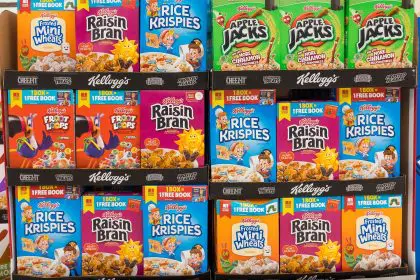Robin Wenzel brings over three decades of commercial and corporate banking expertise to her role as senior vice president and head of Wells Fargo’s Agri-Food Institute. Leading a team of national industry advisors, she provides valuable economic insights and research across the agribusiness, food, and beverage sectors. A University of San Francisco graduate and recognized voice in the Napa wine industry, Wenzel shares her latest research on Thanksgiving food prices and practical shopping strategies for consumers.
[Editor’s note: This is a truncated transcribe of a longer video interview. Please see the video for the extended version. Some errors may occur.]
When you think about the idea of a dinner table, and we’re really trying to make some decisions, what should we know that you know?
I work for the Agri-Food Institute at Wells Fargo, and one of the things we like to do is keep an eye on food and agribusiness, but really try to offer some insight to consumers. We’ve done that recently with our Thanksgiving report. I think, as we all know, people are getting really frustrated and tired of the high food prices. Food inflation has been something we’ve been challenged with since COVID. So we’re trying to help find people who are very weary and fatigued by the high prices and find some deals out there.
So what should we know? What did you find?
Well, the good news is, I think we’re seeing that retailers are trying to offer some good promotions and packaging some Thanksgiving dinners to entice shoppers to choose them. However, we also wanted to take it a step further and really see what the prices look like. We did it in an interesting way to try to help give some guidance to consumers. So we looked at these store brands—what we call maybe the private label—versus the national name brands. Now it’s not going to come as a surprise to anybody that the store brands tend to be the better value, and we continue to see that this year. But that’s despite them coming up in price by about 3% year over year. On the other hand, we saw the name-brand pricing really come down about half a percent year over year. The good news is that the pricing gap between the store brand and the name brand is narrowing. So you’re going to have some flexibility when you’re planning out your Thanksgiving menu.
Coupons and shopping with other reduced opportunities—what should we really be thinking as it relates to maybe finding an additional 5% by planning to use coupons?
I think now people are able to really do research, whether it’s through your local papers and offers that honestly come to you in the mailbox or by doing research online. You can also shop and price shop at different retailers. They are trying to get you in the doors; they are trying to make some deals. Another tip I give consumers specifically around the turkey: we think about turkeys—they generally end up in two spots, either in the deli or on our Thanksgiving table. So as we get closer to the holiday, we may see the pricing come down a bit. Keep an eye on supplies at your store and keep an eye on any sales that the retailers and grocery stores might be pushing as we get closer to the holiday.
Any other holiday tips that you can give for this Thanksgiving? Is this a moment to think about shopping with friends or starting a food club so that you could shop in bulk?
Thanksgiving really is that time for us to come together, gather around a table, and share a meal. To your point and your suggestion of coming together with your families or with your friends, maybe when you’re buying in bulk, you can divide up some of the ingredients that you’re buying to make it matter and make more sense to your wallet. Those are all great things. Potlucks—have people bring their favorite side dishes. That’s one of my favorite things because I get to try out a lot of the recipes that have become a big presence on people’s tables.
Are there any other tips or research that surprised you this Thanksgiving that we need to consider?
Well, for anybody that loves cranberries, this is the year for you. We’ve really seen cranberry prices come down. There was a very nice harvest, so that helped supply and brought the prices down. I’d say the same with a lot of the fresh produce. Again, there were good growing conditions in California, Arizona, and Mexico, where we get a lot of our produce, and good access to water. So we’ve had a nice crop year, and we’ll see those prices of the fresh vegetables come down in the grocery store as well.
When people think about agriculture and the importance of it for this holiday, what about organics? Where are organic food prices today for the consumer?
As you know, organic foods tend to trend a little higher in price. I really just caution consumers to pick and choose where it’s important to you. Maybe there are ways where you can save in other areas of the budget—shopping store brands, getting some deals offered by grocery stores—so that you can go ahead and get the choices you’d like for your family.
What shopping trends are you seeing post-COVID?
National name brands previously had to think about the additional costs of packaging and supply chain issues, which drove up grocery prices. Now those costs are starting to come down, but maybe in some categories, they haven’t come down fast enough. So they’re adjusting prices to meet consumers where they’re at. This is giving everyone a little bit more flexibility to mix and











